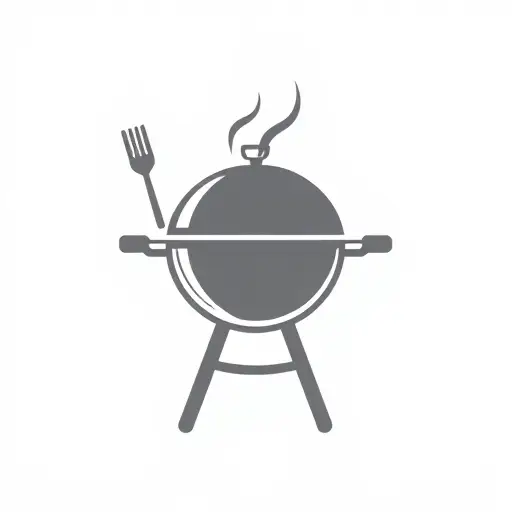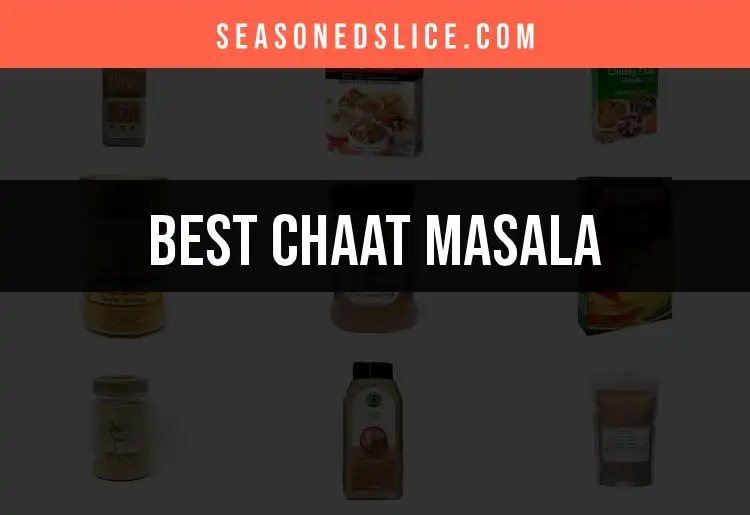A recipe serves as a blueprint for culinary creations, guiding you on how to assemble various ingredients into a cohesive dish. It is crucial not just for novice cooks but for seasoned chefs alike, as it ensures consistency in flavor and texture. Recipes embody cooking's artistic and scientific sides, helping home cooks navigate the sometimes daunting world of meal preparation.
The Importance of Recipes in Cooking
Understanding why recipes matter can enhance your cooking experience significantly. Recipes provide a structured approach to cooking, allowing for experimentation while also minimizing the chances of failure in dish preparation. They teach valuable skills like timing, temperature control, and ingredient functions. Most importantly, following a recipe allows you to recreate those culinary successes consistently, ensuring that everyone can enjoy your dishes time and again.
Types of Recipes
Recipes offer a vast array of types suitable for diverse preferences and occasions. Understanding these can help you choose the right recipe for any situation.
- Traditional Recipes: These recipes often carry personal or cultural significance, passed down through generations. They provide a sense of comfort and connection to heritage, making them invaluable during family gatherings.
- Modern Recipes: Emerging culinary trends introduce innovative techniques and combinations of flavors. These recipes cater to adventurous eaters and encourage experimentation with ingredients and presentations.
- Dietary-Specific Recipes: As dietary needs evolve, so do recipes. These accommodate gluten-free, vegan, or low-carb diets and provide inclusivity for all diners, ensuring that everyone can enjoy a meal together.
Baking Delights
Baking is both an art and science. Mastering the fundamentals of baking is essential for producing delightful, consistent results in pastries, breads, and cookies.
Understanding Baking Ingredients
The ingredients you select greatly influence the outcome of baked goods. Having a deep understanding of their roles can elevate your baking game.
Flour Types
Flour is the foundation of most baked goods, and its type can determine texture, structure, and flavor. All-purpose flour is the most commonly used due to its versatility, but specialty flours like whole wheat, bread flour, and cake flour serve specific purposes:
- Bread flour: Contains more protein for chewier texture, making it ideal for yeasted breads.
- Cake flour: With less protein, it results in tender cakes. The right flour selection is critical to achieving the desired final product.
Sugars in Baking
Sugar contributes not only sweetness but also moisture, flavor, and color through caramelization and browning. For a different taste and texture, consider incorporating turbinado sugar, a minimally processed sugar with a light molasses flavor. It is especially useful for topping cookies or muffins, adding a subtle crunch. Understanding the different sugars and their properties allows you to modify recipes successfully. For more insights on this unique sugar, read our guide on turbinado sugar.
Fats and Oils
Fats contribute rich flavors and textures, so it's crucial to select the right type for your recipe. Butter, for example, imparts a rich, creamy flavor, while oils can provide moisture. A fun alternative for healthy cooking is butter-flavored coconut oil, which can be used for popcorn or baking. It adds a buttery flavor with less saturated fat. Explore more about alternatives in our section on butter flavored coconut oil for popcorn.
The Art of Cookies
Cookies are beloved because they are easy to make and endlessly versatile. Understanding their science helps you craft the perfect cookie every time.
The Science Behind Cookies
Baking cookies involves a delicate balance of ingredients, and getting it right means understanding ingredient ratios. Too much flour can lead to dry cookies, while insufficient flour can cause cookies to spread too much during baking. Requesting the perfect balance of sugar and fat will determine your cookie's chewy, crispy, or cakey texture. Insight into this balance is essential for any baker wishing to perfect their cookie-making skills.
Types of Cookies
One standout cookie type is the Maid Cookie. These cookies are known for their rich texture and delightful balance of flavors. They are incredibly approachable for novice bakers and can become a cherished family recipe when passed down through generations. By mastering this staple, you gain confidence in baking. To dive into our extensive recipe and tips on making these from scratch, check our section on maid cookies.
Essential Baking Techniques
Getting comfortable with fundamental baking techniques can catapult your baking abilities.
Proper Mixing Methods
Different mixing methods yield different results in baked goods. For instance, the creaming method, where sugar and fat are beaten together until light and fluffy, introduces air into the batter, leading to lighter cakes and cookies. On the other hand, folding is a gentle technique used to combine airy ingredients like whipped egg whites into the batter, ensuring that delicate textures are preserved. Familiarizing yourself with these techniques will broaden your skill set significantly.
Cooking with Convenience
In today’s busy world, efficiency in the kitchen is essential, and having convenient options can inspire creativity without the stress.
Exploring Store-Bought Ingredients
Leveraging store-bought products can save time in meal preparation, allowing you to focus on enjoying your time in the kitchen without sacrificing quality.
Chicken Marinades
Store-bought chicken marinades are an incredible time-saver for infusing taste into your poultry favorites. They allow even novice cooks to achieve robust flavors without extensive knowledge of techniques. Look for options with clean ingredients and no added preservatives to make the most of your cooking. If you're searching for the best options, dive into our guide on store-bought chicken marinades to find suitable products for your meals.
Chicken Seasonings
Similarly, store-bought chicken seasonings help simplify the cooking process while enhancing flavors. These spice blends can introduce unexpected layers of taste to your meals. Opting for high-quality seasoning blends guarantees that you're treating your taste buds while streamlining your cooking. Explore our recommendations on enhancing your dishes with the best options available in our section on store-bought chicken seasoning.
Sauces and Condiments
A well-stocked pantry of sauces can transform a mundane meal into a gourmet experience. For instance, consider adding store-bought garlic parmesan sauce to pasta dishes or grilled meats to provide a punch of rich flavor with minimal effort. Explore the various available sauces with tips on making selections in our section on store-bought garlic parmesan sauce. Additionally, for a healthier mayo choice, try Foods Olive Oil Mayonnaise in salads or sandwiches for a creamy, flavorful twist. This option is covered more comprehensively in our guide to foods olive oil mayonnaise.
Bread Crumbs
For quick and effective breading or topping, keep store-bought bread crumbs on hand. They can be added to casseroles or used to crispen up fried dishes without the hassle of making your own. For a different texture, consider brand panko bread crumbs, which are lighter and airier, perfect for creating delicate crusts. Check out the optimal choices available in our sections on store-bought bread crumbs and brand panko bread crumbs to enhance your kitchen repertoire.
Meats and Proteins
Learning how to handle meats and proteins is fundamental to being a well-rounded cook.
Ground Meats
Ground beef is a versatile protein found in numerous dishes, from tacos to meatloaf. Understanding that not all ground beef is created equally—different brands and fat percentages can affect flavor and texture—makes a significant difference in your cooking. Look for quality grass-fed or organic options, which tend to have more robust flavors. You can learn about the best choices available for your meals in our guide on ground beef brands.
Chicken Cooking Methods
Next to beef, chicken is perhaps the most popular meat cooked in homes worldwide. Grilling, roasting, frying, and baking are common methods for preparing chicken, each requiring different time and temperature parameters. Marinating chicken beforehand can infuse it with flavor, ensuring flavorful results. Investing time in selecting marinades that align with your flavor preferences can help create memorable meals, so be sure to check our section on store-bought chicken marinades for further inspiration.
Seafood Preparation
Seafood brings unparalleled taste and nutrition into meals, and mastering proper preparation methods—such as poaching or searing—can elevate your cooking skills. Familiarizing yourself with popular seafood recipes helps to diversify your culinary knowledge, ensuring you're not confined to just chicken or beef.
Sauces, Seasonings & Condiments
Quality sauces and seasonings can take a dish from bland to extraordinary, making them invaluable components of cooking.
Essential Sauces for Every Kitchen
Creating a collection of essential sauces is an excellent strategy for simplifying meal preparation. Classic tomato sauce, pesto, and teriyaki sauce provide fundamental flavors that can be used in various dishes. Everyone should have a few staple sauces that can easily be adapted to suit different cuisines.
Seasonings to Elevate Dishes
Enhancing your cooking often comes down to the seasonings you use. A balanced blend of spices can turn basic ingredients into delectable meals. Consider incorporating salt, pepper, and garlic seasoning, which works wonders to accentuate the flavors in meats, vegetables, or pasta. For more information about optimizing your dishes, explore our guide on salt pepper garlic seasoning.
Specialty Sauces
Experimenting with specialty sauces—like barbecue or homemade vinaigrettes—can introduce exciting flavors into your meals. Learning how to make these sauces at home can also help you control the ingredients, aligning them with your dietary needs.
Understanding Oil-Based Colorants
In baking and dessert-making, appearance can be just as vital as taste. Using oil-based food coloring ensures vibrant and lasting colors, which is crucial when decorating cakes or chocolate treats. As water-based colors can lead to unwanted texture changes, it's beneficial to dive deeper into effective choices found in our section on oil-based food coloring for chocolate.
Sweet Treats: Desserts and Beverages
Desserts are often the highlight of meals, making it essential to understand how to create them effectively.
Classic Dessert Recipes
Baking classic desserts connects people to tradition and evokes nostalgia. Recipes like chocolate chip cookies or apple pie are often associated with family gatherings, making them invaluable staples. Understanding how to replicate these easy yet satisfying recipes is a key skill for every home cook.
Milkshakes and Related Treats
Creating the perfect milkshake doesn’t have to be daunting. The right blend of ice cream and milk can create a deliciously smooth drink. Incorporating ingredients like malt powder enhances the flavor and elevates your milkshake into a nostalgic treat reminiscent of diner favorites. If you aren't sure how to integrate malt into your milkshakes, explore our guide on malt powder for milkshakes for tips.
Creative Dessert Recipes
For special occasions, think about innovative desserts. Cocktail bombs—edible treats that dissolve in liquids to create flavored beverages—can add pizzazz to your gatherings, impressing guests while being simple to prepare. Discover more about these fun culinary creations in our section on cocktail bombs.
Unique Ingredients for Desserts
Incorporating unique ingredients, such as macadamia nut oil, lends a new and exciting flavor to baked goods. This oil provides a slightly nutty taste that enhances various desserts. For insights on how to use this ingredient in your cooking, check our guide on macadamia nut oil.
Quick Meals and Frozen Options
Mastering quick meals and frozen options can drastically reduce stress during hectic weeks, allowing you to enjoy more leisurely cooking experiences.
Easy Frozen Meals: A Guide
Easy-to-prepare frozen meals, such as chicken fettuccine alfredo, provide quick options without compromising taste. As frozen meals have evolved, they can often rival homemade versions in terms of flavor and quality, giving busy parents and professionals a reliable alternative. Dive into our guide on frozen chicken fettuccine alfredo to explore top choices that suit your tastes.
Making Family Meals Easy
Streamlining dinner preparation by using frozen or semi-prepared ingredients saves precious time and minimizes stress. Snacks and ready-made meals allow families to gather and enjoy quality time together, even amid busy schedules.
Best Practices for Freezing Food
Learning the best practices for freezing food, such as proper packaging and labeling, helps to maintain quality while avoiding freezer burn. Properly frozen meals can last longer, giving you a stash of quick go-tos for nights when cooking seems overwhelming.
Special Ingredients and Their Uses
Integrating unique ingredients into your dishes can enhance flavors and elevate your meals.
Unique Cooking Ingredients
Saffron is a luxurious spice that can dramatically improve dishes like paella. Known as the world’s most expensive spice, its unique flavor and vibrant color cannot be replicated. An understanding of this valuable ingredient helps ensure you can effectively use it in your cooking. Explore our guide on saffron for paella to learn how to incorporate it in traditional recipes.
Understanding Pickling
Pickling offers a fun and engaging way to preserve vegetables while introducing unique flavors. Knowing the best maid pickles ingredients is essential for crafting homemade pickles that burst with flavor. These pickles can elevate sandwiches or serve as a unique side dish. For more details about the essentials of crafting pickles, check our section on maid pickles ingredients.
Cooking Media and References
Harnessing the power of media can significantly enrich your culinary journey, providing inspiration and educational materials.
Top Cooking Shows
Television cooking shows can serve as fantastic templates for learning new techniques or exploring various cuisines. Engaging with cooking shows on Prime allows viewers to see dishes come to life. You can learn the intricacies of cooking from professional chefs, gaining both confidence and skill. If you're looking for top recommendations, read our guide on cooking shows on Prime.
Cookbooks to Enhance Your Skills
Investing in well-curated cookbooks can introduce you to new techniques and recipes, expanding your cooking repertoire. They can also offer insights into culinary history and cultural dishes, making cooking a richer experience.
Influential Chefs to Follow
By engaging with influential chefs, home cooks can tap into contemporary culinary trends and techniques. Following their recipes and learning from their expertise can inspire new cooking adventures.
Conclusion
Cooking at home can ignite creativity and foster a sense of accomplishment when approached thoughtfully. Understanding different recipes, techniques, and ingredients forms the bedrock of culinary success. With this comprehensive guide to recipes, consider it your go-to resource for culinary exploration. Each link provides additional insights, ensuring you have all the tools at your disposal to create memorable dishes and transform your kitchen into a hub of creativity and flavor.
FAQs
Common Questions about Recipes
Many novice cooks face common challenges—like ingredient substitutions or timing issues—when following recipes. Familiarizing yourself with these potential pitfalls can lead to more successful cooking outcomes.
Troubleshooting Cooking Issues
Knowing how to address cooking mishaps, such as undercooked pasta or burnt proteins, allows you to recover quickly and learn valuable lessons for future attempts.
Tips for Recipe Substitutions
Cooking invites experimentation; many ingredients can work as substitutes without sacrificing flavor. Understanding these substitutions encourages food creativity and personalizes your cooking style.
This comprehensive guide on recipes offers an in-depth exploration of ingredients, techniques, and essential tips that will help elevate your culinary experience to new heights. Each internal link presents an opportunity for further discovery, equipping you with the knowledge to transform your cooking endeavors.
















